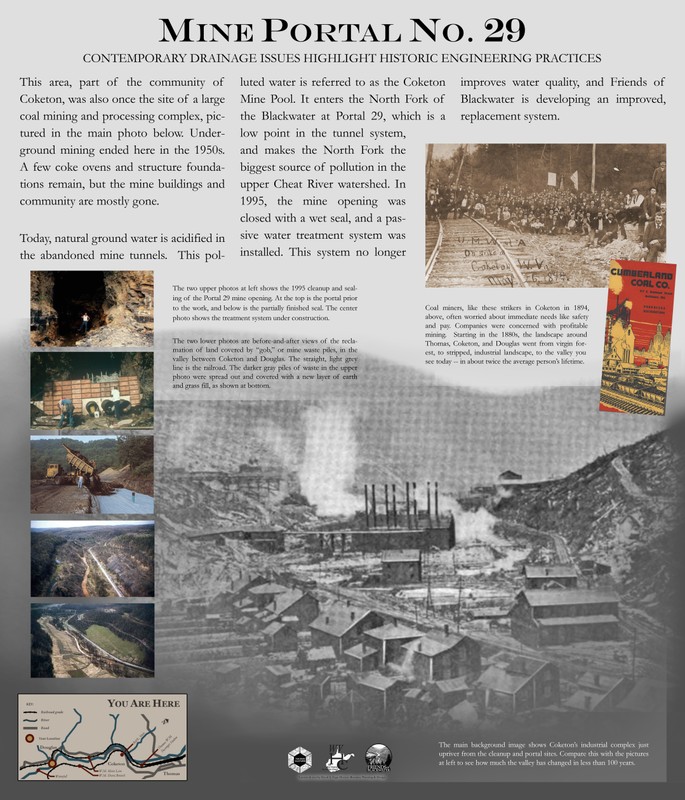Mine Portal no. 29
Introduction
Text-to-speech Audio
This hillside was the location of a coal mine entrance until the 1950s when underground mining operations ceased. This portal was located near Coketon, an industrial complex and power plant that was almost as large as those in Thomas. A few foundations remain, along with some coke ovens, but the mine buildings and community are mostly gone. Today, groundwater is exposed to and acidified by the coal deposits known as the Coketon Mine Pool. Water flows out through this old mine entrance polluting the North Fork of the Blackwater River. In 1995, the mine opening was closed with a wet seal, and a passive water treatment system was installed. This system was no longer effective, and a non-profit known as the Friends of Blackwater works to monitor and improve the water quality in the North Fork.
Images
Information about Mine Portal no. 29 from Friends of Blackwater

Backstory and Context
Text-to-speech Audio
The community of Coketon was home to a large industrial complex that supported mining operations, including machine shops and structures that housed equipment that sorted coal as it came out of the mines. The complex was surrounded by houses and a vibrant and active community. Little is left today because the mining operation closed decades ago, however, this site is noteworthy because there was this underground system of mine tunnels that connected to one another and went for miles and miles.
After mining operations ceased, groundwater pooled in the mine tunnels and this continues to do so today in low-points within the system of tunnels. Because there is acid in the hole that remains in the ground and some of the surrounding rock, groundwater picks up that acid in ways that it wouldn’t have done prior to mining and it flows through these tunnels to the North Fork of the Blackwater River. This remains one of the highest sources of pollution in the watershed as demonstrated by the work of the Friends of Blackwater who have been monitoring pollution for years. In the 1990s there was a passive treatment system and a seal installed at the tunnel entrance. That system no longer provides the treatment that it once did, but the organizations continue to monitor and work with other agencies on solutions to the issue.
